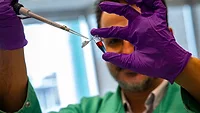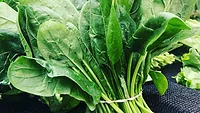USDA Grants MSU $611,000 to Research Heavy Metals Uptake in Food Crops, Identify Mitigation Strategies

Image credit: Armando Arauz via Unsplash
The U.S. Department of Agriculture’s National Institute of Food and Agriculture (USDA’s NIFA) has granted a Michigan State University (MSU) research team $611,000 to explore the uptake of toxic heavy metals in food crops, with the goal of providing a guide containing mitigation strategies and decision-making resources for growers and policymakers.
The project is led by Wei Zhang, Ph.D., Associate Professor and Associate Chair in the Department of Plant, Soil and Microbial Sciences at MSU. Dr. Zhang and his team aim to understand the complex drivers of crop uptake of heavy metals, which vary by crop species, soil type, field topography and climatic conditions.
The new project builds on other research that Dr. Zhang is participating in, such as work to test the effectiveness of soil amendments on minimizing carrot uptake of multiple heavy metals. Another project is assessing cadmium exposure from rice, spinach, and other crops as part of the U.S. Food and Drug Administration’s (FDA’s) Closer to Zero initiative. Dr. Zhang and other researchers are also working on the application of machine learning techniques to predict crop uptake of contaminants more accurately.
The initial year of research on carrots’ uptake of multiple heavy metals has revealed the influence of multiple factors. New funding from USDA’s NIFA will enable the MSU team to continue with the subsequent phase of research on this project to help equip carrot growers with information to provide safer product to consumers in the future. With USDA’s grant, the researchers will expand their work on carrots and broaden their scope to include wheat, which are both crops that are common ingredients in baby foods and are produced in Michigan.
The project has three overarching objectives aimed at uncovering the circumstances that lead to heavy metals uptake and its mitigation. First, the team will analyze soil samples taken from carrot and wheat fields in Michigan for the presence of arsenic, cadmium, and lead to assess the relationship between contamination levels in soil and in crops and determine if greater contamination leads to more crop uptake. The researchers will also grow carrots and wheat in MSU greenhouses to evaluate crop uptake at various growth stages and soil moisture levels, hypothesizing that different developmental and climatic conditions will be highly consequential.
The second objective will involve sampling of soil and plants over multiple years, taken three times a year, to investigate potential changes in crop uptake based on differing growth stages, soil properties, and topography. For the third objective, Zhang and Wu will use the climate, plant and soil data collected from the first two objectives to create machine learning-based risk models for heavy metal uptake. Using these models and other available data, researchers will generate an assessment of the feasibility and cost-effectiveness of mitigation strategies, which include soil amendments, crop rotation, fertilizer management, cultivar selection, and other actions.
The end goal of the project is to develop a guide to heavy metals uptake mitigation that offers cost-effective practices tailored to the conditions of individual farms, as well as resources for policymakers that help them make informed decisions.
Looking for quick answers on food safety topics?
Try Ask FSM, our new smart AI search tool.
Ask FSM →








